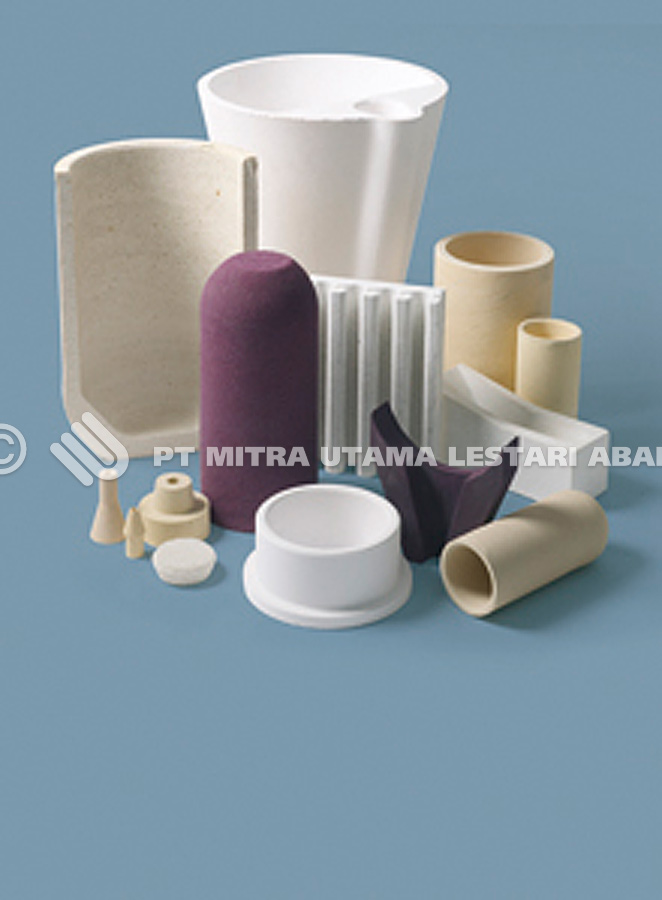
Stabilised with magnesia to prevent volume changes, it has an excellent resistance to acidic slags..
It is unaffected by Ni, Mo, Al, Fe, Pb and has good resistance to Zr and Be
Widely used in vacuum melting applications for the melting of superalloys, this material exhibits superior resistance to thermal shock and erosion. It has low thermal expansion properties.
Maximum service temperature 2000°C.
| Chemical composition | |||
| Si02 | 2.10 | ||
| Ti02 | 0.15 | ||
| Fe203 | 0.12 | ||
| Al203 | 1.57 | ||
| Ca0 | 0.20 | ||
| Mg0 | 3.55 | ||
| Zr02 + Hf02 | 92.08 | ||
| Physical | |||
| Porosity | 20% | ||
| Density | 4580kgm-3 | ||
| Heat | |||
| Specific Heat (J kg-10C-1) | 550 - 810 | (20°C - 2000°C) | |
| Heat conductivity (Wm-10C-1) | 0.8 - 1.8 | (20°C - 2000°C) | |
| Heat expansion coefficient (°C-1) | (6.2 - 9.6) x 10-6 | (20°C - 1600°C) | |
| General | |||
| Maximum operating temperature (°C) | 2000 | ||
| Resistance (ohm cm) | 12.8 - 1.0 | (1250°C - 2000°C) | |
Capacity of crucibles that can be made from a weight of 1 to 500 kg, for ladle transfers from 10 to 200 kg and a refractory shape according to the size needed.
Monocrystal (Single) Fused Alumina Product
Monocrystal (Single) Fused Alumina Product is produced from high purity Bayer Alumina.

